
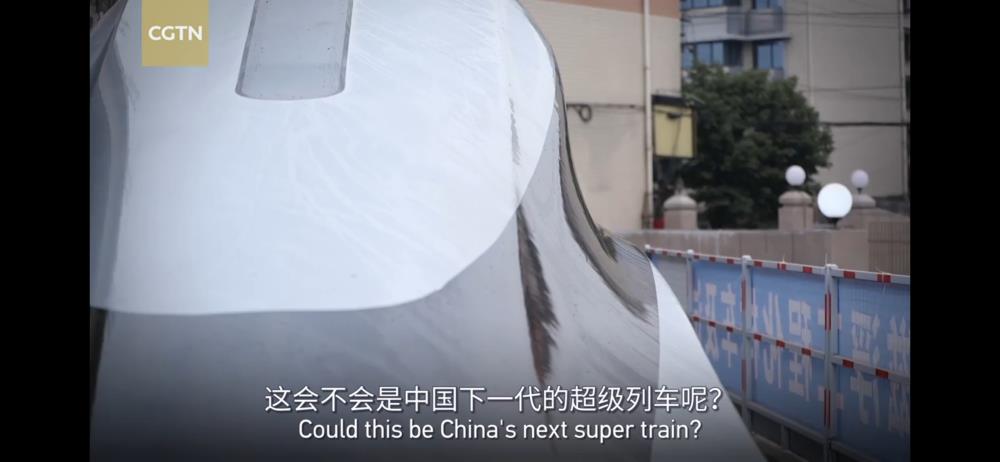


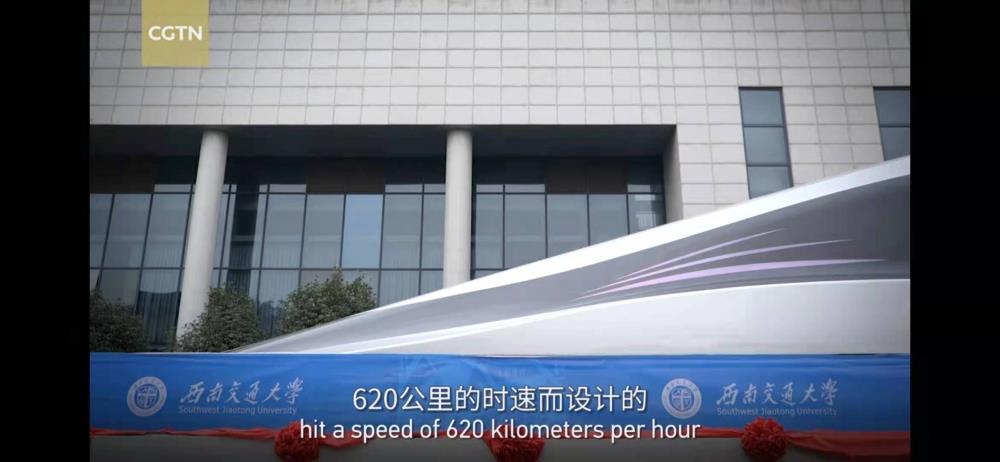
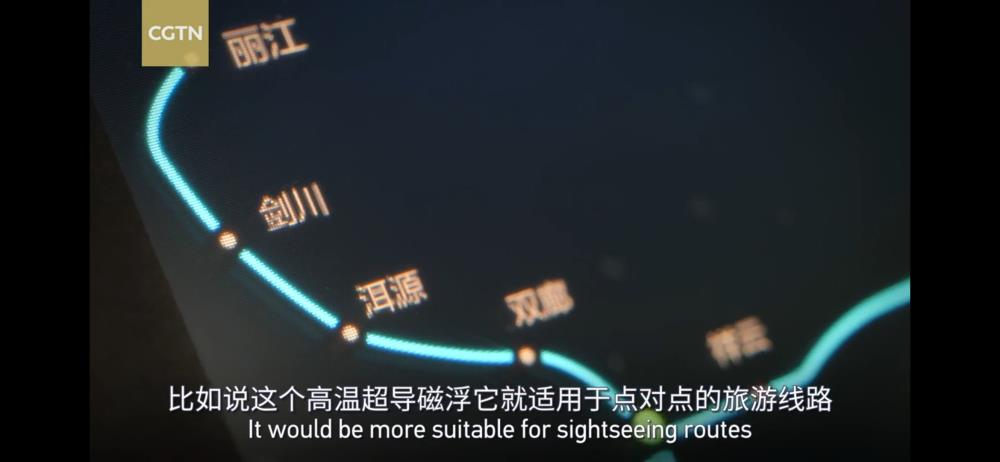

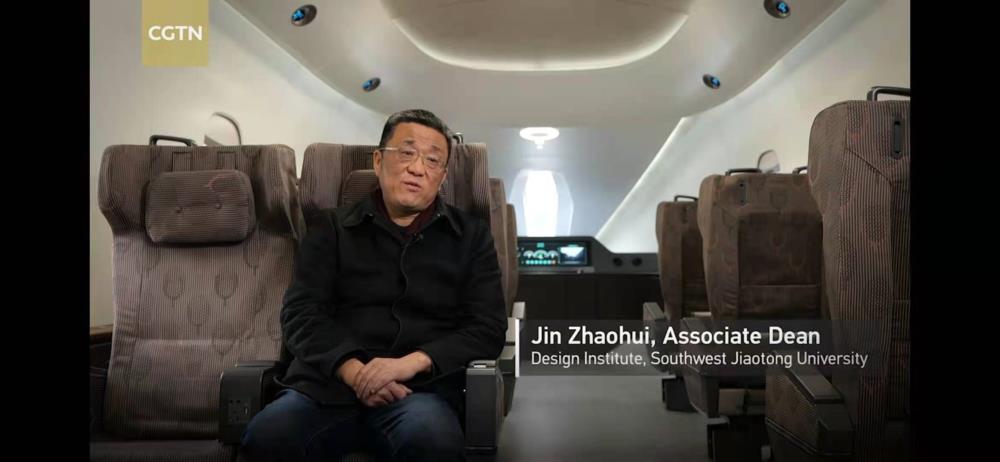
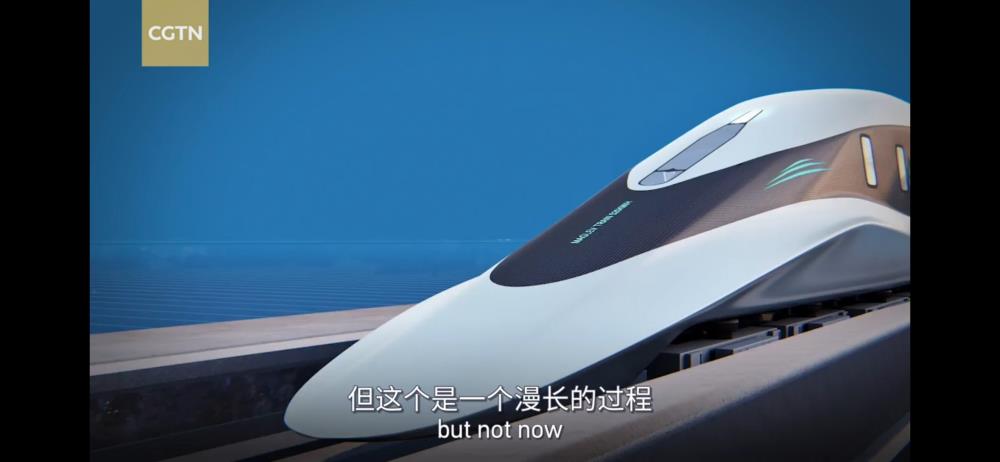
China already possesses the world's largest high-speed railway network, and it will only expand more ambitiously, according to the country's new Five-Year Plan. But it's not just the railroads that are extending. China may also get a major boost in the speed of its bullet trains. A prototype maglev train recently unveiled at Southwest Jiaotong University in Chengdu, Sichuan Province aims to set a new speed record for trains – the current record of 603 kilometers per hour is held by Japan's SCMaglev. China's answer to it is 620.
This maglev train deploys what's known as "high-temperature superconductive" technology, or HTS. It takes advantage of two unique properties of high-temperature superconductors: the "Meissner effect" which allows a superconductor to completely repel the magnetic fields around it to achieve levitation, and "flux pinning," which keeps the superconductor steady above its magnetic tracks, so it never falls off.
Unlike China's existing high-speed railway technology and the country's most iconic maglev line in Shanghai – both technologies which are largely imported, China's new HTS maglev is 100 percent developed by its own top scientists. It took over 20 years for this technology to emerge from a university lab to become a real prototype.
Professor Deng Zigang became the successor of his two mentors and is now taking the lead to make this technology a contender. "If things go as expected," Deng said, "We may see this train in commercial operation within the next three to five years."
This prototype train has a body made entirely from carbon fiber and weighs a mere 13 tonnes. When it levitates, there is virtually no resistance between the train and the tracks. The only force that keeps the train from going even faster is air friction.
Professor Jin Zhaohui, associate dean at the university's Design Institute, told CGTN that they could push the train's speed limit even further to possibly 1,500 kilometers per hour in partly evacuated tubes or tunnels. But for now, the key is to put its designed 620-kilometers-per-hour top speed to the test, and Jin and Deng have their teams working jointly to build a 40-kilometer-long test track outside Chengdu.
When asked if maglev trains could one day replace all the wheeled trains, Jin said maglevs are "a great addition" to our existing railway transportation. For one, most existing tracks are not compatible with maglev technologies, and maglev trains are more suitable for routes with a large number of passengers on both ends without two many stops in between.
He said the first possible commercial line for the super maglev could be a sightseeing line in southwest China's Yunnan Province.
Source:China Global Television Network(CGTN)
https://news.cgtn.com/news/2021-03-11/Tech-It-Out-China-to-set-a-new-speed-record-in-ground-transportation-YxvOSRLko8/index.html
 He Songlin Granted the Best Paper Award at IEEE IPCCC 2024
He Songlin Granted the Best Paper Award at IEEE IPCCC 2024
 Prof. Wu's Team Bestowed Best Paper Award at ACM Multimedia Asia 2024
Prof. Wu's Team Bestowed Best Paper Award at ACM Multimedia Asia 2024
 Alumnus Xi Yue Graced the Cover of 2024 Forbes 30 Under 30 China List
Alumnus Xi Yue Graced the Cover of 2024 Forbes 30 Under 30 China List
 The 15th Asia-Pacific Symposium on Engineering Plasticity and its Applications
The 15th Asia-Pacific Symposium on Engineering Plasticity and its Applications
 General Education Course on “Frontiers in AI Applications: Methods, Thinking, and Ethics”
General Education Course on “Frontiers in AI Applications: Methods, Thinking, and Ethics”